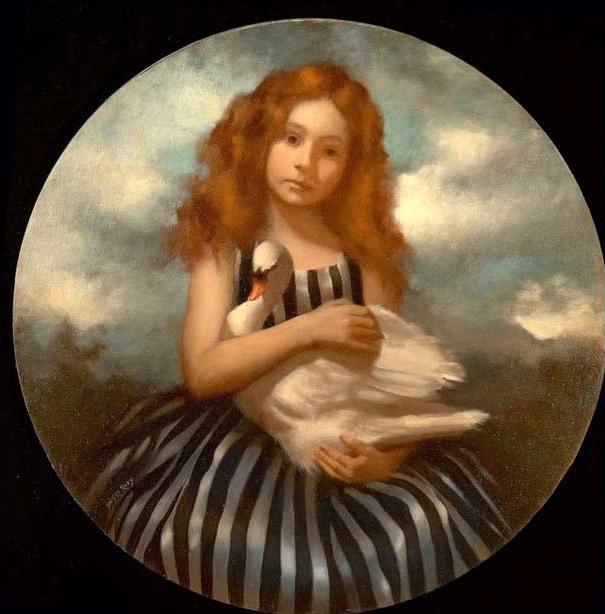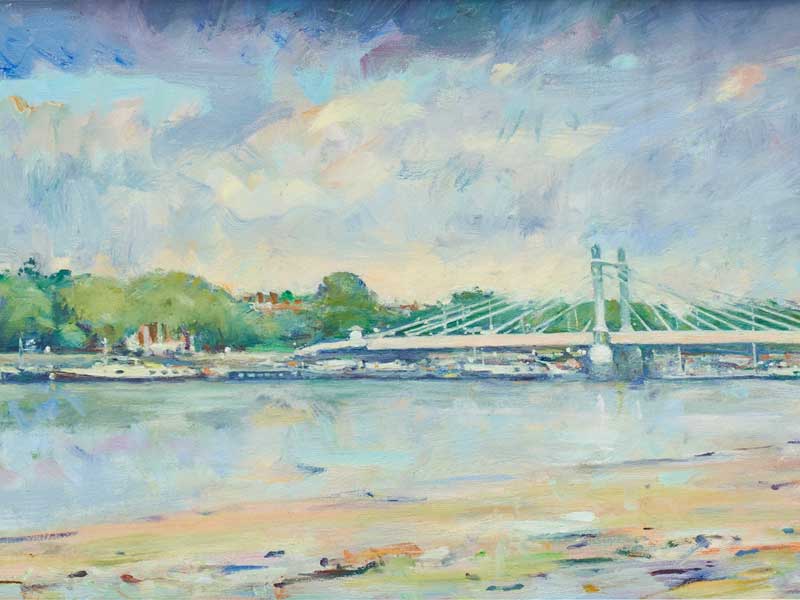Deidre Riley is an American award-winning artist and educator, having studied both fine art and illustration. As well as having her own commercial success as an artist, Deidre has taught throughout her arts career, most recently in Riyadh, Saudi Arabia. Her work can be found at www.deidreriley.com or on Instagram at @deidreriley_.

Deidre Riley, ‘Contemplation’, 2016.
Throughout my art education and career, I have had the privilege to experience both the worlds of the atelier and art school. Learning and teaching, I have encountered artists, students and teachers from both contexts, gaining a wealth of insight into the varied paths art education can take.
My art journey began at university, where I studied art history. Inspired by my degree, I sought to improve my practical art skills in painting and drawing and found Paul Ingbretson’s atelier in New England to be the perfect place to do so.
As a studio with more traditional and skill-specific offerings, Ingbretson’s atelier attracted students with a very similar background to my own: those who had been through the art school, college or university systems and were now seeking a new environment where they could master specific art techniques and styles.
It was at Ingbretson’s where I learned about other ateliers through my new peers. Oliver Maughan, an English student, told me of his prior study at Charles H. Cecil Studios in Florence, Italy. There, his experience very much aligned with the classical atelier tradition, with Charles Cecil himself closely following and working with students to develop their projects and skills.
Cecil’s studio has its own specialisms, as does Ingbretson’s, but their core philosophy as ateliers is largely similar. Both aim to train their students to achieve strong painting and drawing skills, to uphold the higher beauty in the arts, and ultimately to produce artists who practice as professional painters.
Oliver himself continued his career as a professional painter, specialising in landscapes and the ‘en plein air’ method. I took a somewhat unusual route, moving from an atelier to a higher education institution to complete a Master of Fine Art and enter the world of teaching at a New England art college.

Oliver Maughan, ‘Albert Bridge and Cadogan Pier’, 2021.
Having experienced the atelier and art school systems, there are numerous key differences in how they teach, how they operate, and their ethos.
Teaching styles are very different in each system. As art schools employ many instructors from varied backgrounds, students can be exposed to a wider range of methods and styles, giving them the freedom to choose what suits them best.
In contrast, ateliers are usually led by one or two teachers, resulting in a focused approach with a more clearly defined goal. Training at ateliers is given by highly specialised teachers and students achieve very advanced levels of artistic skill. After completing atelier training, students are well equipped with a mastery of techniques to explore and develop their personal styles.
In ateliers, still working towards the studio’s philosophy and aims, students work at their own pace and only proceed when they have mastered a skill. For example, a student can sometimes spend an entire year drawing plaster casts. At art schools, the structure of learning is rigidly scheduled. Courses take place over a semester, with set hours of teaching and practice each day.
With each system of art education being so varied, they each come with their own lists of advantages and disadvantages.
Art schools have the advantage of exposure to a variety of classes, teachers, art styles and media. With room for more experimentation, students also have the opportunity to explore new creative avenues. When first beginning arts training, it can be beneficial to explore different approaches before deciding which works best for yourself. Over time, one can then have more freedom to develop their own artistic style.
At a practical level, art schools provide a degree, career placement, financial assistance and housing, while these are not offered by ateliers. In the US, the Art Renewal Center provides some scholarships to ateliers, though they are limited. However, tuition for ateliers is usually significantly lower than art school, meaning they are also more sustainable if the student chooses to stay on beyond the standard four years.
Class sizes and demographics also vary between the systems. Art schools have larger classes and students tend to share a similar age. Ateliers are much more intimate, with ample opportunity for one-on-one instruction, and students come from a broad range of ages.
Ultimately, there are a vast number of factors for those seeking arts training to consider. In this case, the advantages and disadvantages presented by each option are subjective, dependent on the individual needs and preferences of the student. For me, having the privilege to experience both atelier and art school systems has certainly expanded my skillsets in a range of ways, and this has only made my art richer.
Read the full article here: https://artdaily.com/news/146690/Art-Education--Atelier-versus-Art-School
